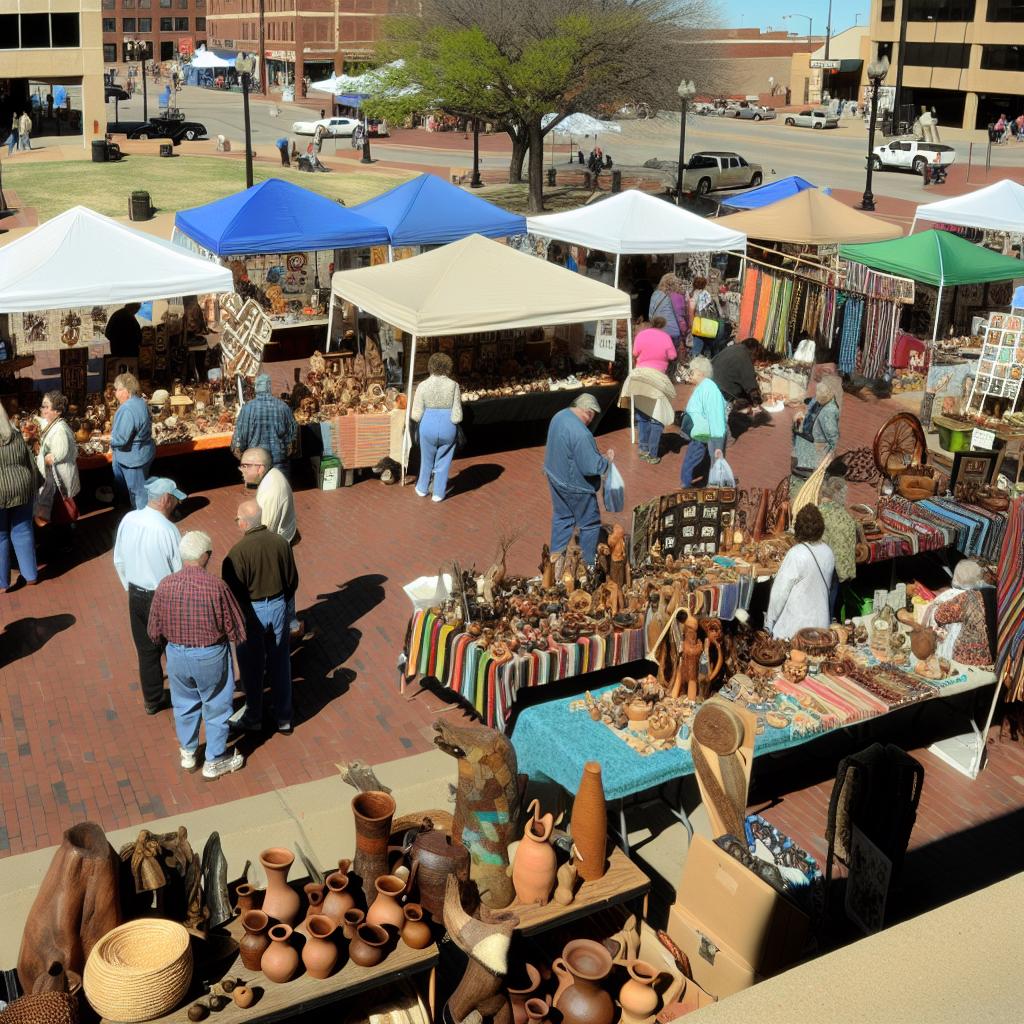The Rise of Local Crafts and Handmade Markets
In recent years, there has been a notable resurgence in the popularity of local crafts and handmade markets. These events offer a platform for artisans and crafters to showcase their unique creations to a wider audience. As interest in sustainable and personalized goods grows, these markets are becoming a staple in many communities across the globe.
Understanding Local Crafts
Local crafts are typically handmade items created by artisans using traditional methods. These crafts often have cultural or regional significance, and many communities cherish these skills as an essential part of their heritage. Local crafts can include textiles, ceramics, jewelry, and home decor, among other items.
Exploring Traditional Methods
The beauty of local crafts is that they are steeped in tradition, with many artisans learning their trade through generations of family practice. Traditional methods often involve more than just the final creation; they encompass the skilled techniques and precise tools used to craft each item. From loom weaving in textile creation to hand-kneading clay in ceramics, these methods add a layer of authenticity and value to the finished products.
The Appeal of Handmade Markets
Handmade markets provide an opportunity for consumers to purchase products directly from the makers. This personal interaction not only supports local economies but also fosters a deeper connection between buyers and artisans. Moreover, these markets often feature products made from sustainable materials, aligning with the growing consumer interest in environmentally friendly options.
Cultural Significance and Community Impact
Hosting a local crafts market is not just a sales event; it’s a cultural experience. These markets become community hubs that celebrate local traditions and craftspeople. For younger generations, visiting these markets can be an educational experience that instills respect and appreciation for cultural heritage. The markets include live demonstrations where artisans showcase their craft processes, which can be both enlightening and inspiring for spectators.
Benefits for Artisans and Consumers
For artisans, handmade markets offer a venue to reach potential customers without the significant overhead costs associated with traditional retail spaces. They can also test new products and receive immediate feedback from shoppers. Consumers, on the other hand, enjoy access to a wide array of one-of-a-kind items that reflect the artisanal craftsmanship and creativity often lacking in mass-produced goods.
Nurturing Emerging Talents
Handmade markets are not only beneficial for established artisans but also serve as an incubator for emerging talents. Many novice crafters find their first customer base at these markets, using the immediate feedback and interaction to refine their products and marketing approaches.
A Gateway to Customization
An increasingly appealing aspect for consumers is the potential for product customization. By interacting directly with artisans, buyers can often commission personalized versions of products, ensuring that the item perfectly suits their taste and needs. This custom approach allows for a more meaningful transaction process, emphasizing a closer connection between the artisan and the buyer.
Finding Local Markets
Many cities and towns regularly host handmade markets, especially during holiday seasons. Some events might be one-time fairs, while others are recurring, like weekly or monthly markets. Websites such as Eventbrite and Meetup are useful resources for finding local events. Additionally, social media platforms can provide up-to-date information and insights into upcoming markets in your area.
Expanding Market Visibility
Artisans now increasingly turn to digital platforms to broaden their market reach. Online marketplaces and social media pages allow artisans to advertise their presence at various markets, sometimes even showcasing or preselling their goods to local and international customers. This evolving digital presence complements the traditional market experience, bringing even greater visibility and opportunity to handmade crafts.
Understanding the role of local crafts and handmade markets is essential for those interested in supporting sustainable practices and unique goods. As these markets continue to flourish, they offer a way for both artisans and consumers to engage in a more personalized and environmentally conscious economy.
Integrating Local Crafts into Modern Living
While local crafts celebrate tradition, they are equally adaptable to contemporary settings. Artisans often blend old techniques with modern design elements, giving traditional crafts a fresh look that appeals to today’s consumers. This integration into modern living spaces showcases the versatility and timeless quality of handmade goods.
The Economic Ecosystem
Local craft markets contribute to a thriving economic ecosystem. Beyond their economic contributions, they encourage entrepreneurship by lowering entry barriers, particularly for minority and underrepresented artisan groups. Markets act as springboards, offering vital exposure and experience for growing businesses. The economic ripple effects extend to local suppliers of raw materials, logistics providers, and even local eateries and cafes catering to market goers.
Challenges and Future Directions
Despite their many benefits, local crafts and handmade markets face challenges, such as competition from mass-produced goods and fluctuations in market attendance. To sustain their growth, markets must innovate by incorporating new themes, digital strategies, and collaborations with other community organizations. Strong community support and evolving market formats will be crucial in overcoming these obstacles, ensuring that this cherished tradition thrives in the future.
Embracing Technology
Some market events are beginning to embrace technology, using cashless payment systems and implementing digital ticketing for ease of entry. Additionally, live streaming during markets helps to expand the audience, providing access for those unable to attend in person. Embracing technology in this way could help sustain interest and engagement while modernizing the crafts market experience.
In every corner of the globe, local crafts and handmade markets reflect the diversity and creativity of humanity. As these markets grow in number and popularity, they offer hope for a more sustainable and personal economic future.

